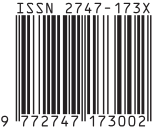Investigation of The Potentials of Sisal-Palm Slag Composites as Materials for Asbestos-Free Brake Pad
DOI:
https://doi.org/10.19184/cerimre.v7i1.45149Keywords:
Brake Pad, Asbestos, Pin on Disc Wear Tester, Hardness, Sisal, Palm Slag, PorosityAbstract
Asbestos conventionally used as frictional materials in brake pads causes environmental pollution and is unsafe for human health. This study’s goal was to assess alternative brake pads made from sisal-palm slag. Ten composite brake pads were produced by combining sisal-palm slag with epoxy resin, silica and steel slag using formulations obtained from the rule of mixture experimental design method. The produced brake pad composites physical properties (density (Ï), porosity (φ) and tribo-mechanical properties (wear rate (Å´), hardness (HB), compressive strength (σ) were evaluated. From the results, the control sample (Auto-boss brake pad) recorded values of 1.7800 g/cm3, 18%, 1.127 mg/min, 110BHN and 43.204N/mm2 for Ï, φ, Å´, HB and σ respectively. The best performing sample was sample 5 with recorded values of 1.3329 g/cm3, 23.40%, 1.143mg/min, 102.28BHN and 39.642 N/mm2 respectively, while sample 9 was the least performing samples with recorded values of 1.3123 g/cm3, 30.43%, 1.571mg/min, 76.77BHN and 26.74 N/mm2 for the above parameters respectively. The study showed that the produced samples offered comparable performance to that of asbestos-based and hence could serve as possible replacement for them.
Keywords: Brake Pad, Asbestos, Pin on Disc Wear Tester, Hardness, Sisal, Palm Slag, Porosity








